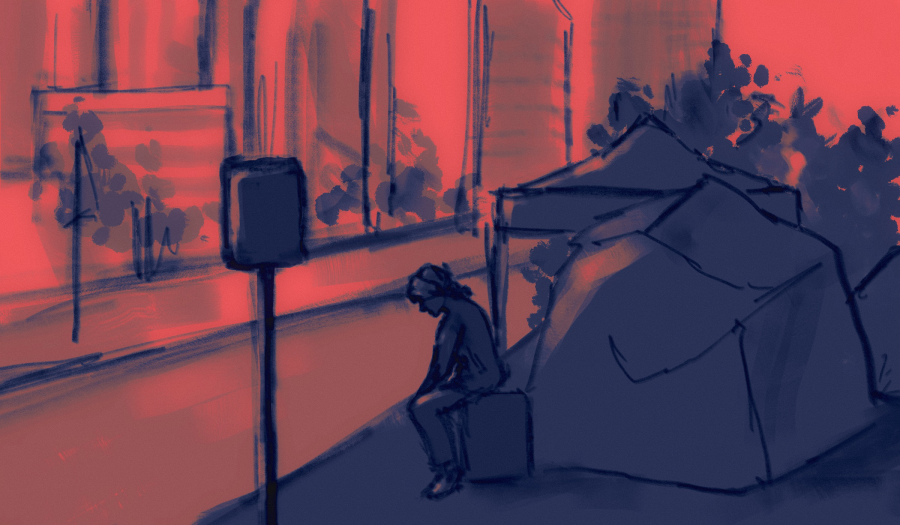California, the golden state. Residence in the state is a daydream: consistently bright skies, perfect weather, and a million and one attractions. That’s part of the travel appeal, right? For years, tourism within California has seen an upward trend, as travelers are eager to to walk down Hollywood Boulevard for the first time. However, the high expectations held for a trip to California often disintegrate slowly once tourists witness that Hollywood is not only a fame attraction, but it is a representation of the homelessness crisis within California, standing as the fourth most homeless city in the entire world.
From trying to build more shelters to asking for funding to help with rent payments on the governmental level, California has made efforts to minimize the amount of homelessness. However, the efforts to build more affordable housing have faced backlash from Not-In-My-Back-Yard advocates who argued these initiatives could lead to higher crime rates, violence, and theft. Ultimately, these NIMBY mentalities perpetuate an already highly common overgeneralization of the homeless population and crisis, when in reality, the homelessness issue in California is not as simple as handing out freebies to assumed potential perpetrators.
In California, when last recorded in 2018, there were roughly 151,278 individuals who could be identified as homeless. It is occasionally theorized that most, if not all, of the homeless are either substance abusers or lazy. Both constructs are fallacious overgeneralizations that undermine the impact of what is actually going wrong in California.
In reality, there are various reasons behind someone not being able to have a permanent residence. Can most studies and research point to the fact that there is a correlation between substance abuse and homelessness? Yes. Can studies and data similarly point to the fact that a shortage of affordable housing in California also has a correlation to homelessness? Yes. In essence, this is not simply an issue of some Californians having a substance problem. It is a problem with not having a place to house Californians where they can afford to consistently make payments.
San Diego, for example, has an average rent of approximately $1,850. For anyone who cannot afford to make such a payment on top of paying amenities or purchasing other necessities, the option for housing vouchers is available. There is a variety of criteria that needs to be met in order to qualify for a Section 8 housing voucher, and after you apply, your name is placed on a waiting list. How long do applicants have to wait? By virtue of limited funding, it could be ten or more years until applicants may hear back. Where do you go in the meantime when you cannot afford any other option and have nowhere else to turn to?
There are the options of homeless shelters, sure. Some homeless actually avoid certain shelters because they harbor drugs, crime, and violence. In some counties, homeless shelters can be entirely unsanitary — sometimes having bedbugs, mold, and rats. Staying in a tent on the street might provide more sanitation than a shelter, which prompts choosing to sleep on the walk of fame as opposed to a shelter.
That is one of the most pressing issues within California. It is a daydream for those who hope for the chance to visit, but it’s an incubus for Californians who cannot even afford to live within the state after attempting to receive government assistance.
As of 2019, a rough 43 percent of Californians stated that they could not afford to live within the state for reasons that both include and extend past housing. Trying to live while maintaining other essentials for life in California is not cheap, and for those who find that they are not able to make housing payments, being homeless on the streets of San Diego may be a last resort.
Seeing someone sleep on the streets of your city may not be ideal, however, it is not many people’s perfect morning to have to sit on the curb at 8 a.m.. Vilifying the homeless and/or making comments about how they may “deserve it” for substance abuse is indicative of how many are still viewing this as a two-dimensional problem. Since the commencement of the pandemic, almost four million Americans have been out of work for multiple months. The most current and prevalent public health crisis in America has demonstrated how at any moment the security of life can be tested. That is exactly why the too-common denunciation of individuals who are homeless needs to end.
Homeless people are not just those who struggle with addiction, and they are not just those who actually do engage in crime. At any moment, life can change and leave anyone vulnerable to being homeless. Speaking lowly of individuals because of their housing insecurity and advocating against options that can improve that situation seems like more than just a fear of mingling with the homeless. It feels like a lack of compassion.
Art by Angela Liang for the UC San Diego Guardian.














